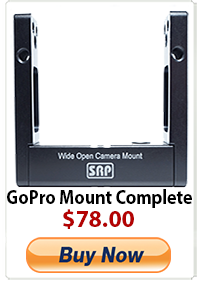ZOOMS VS PRIMES: DAMMIT.
You know how it goes, here’s this camera I’ve bought and I know I need lenses, and I’m going to need a few and I read all the blogs and I know that Zeiss glass is the best, but I can’t really afford it, but I want to shoot with this new camera of mine but I also need batteries, and an ND filter, and I need to make the thing justify the expense of it but one lens isn’t going to be enough because I’m shooting video and now I’m all confused because I don’t want to compromise on glass. Help.

Tokina 28-80
The choice of lenses is, quite frankly, very daunting, especially when you’re starting out on this DSLR video tightrope. We all know that primes deliver a better image, with simpler mechanisms and excitingly wide maximum apertures, that specificity of purpose presenting a mighty case. Right now, and I do only mean right now, DSLR video is such a giant compromise thanks to the way our cameras pull out a 1080p image and compress it that your goal should always be to feed the absolute best image in at the front to minimise the potential for mess out the other end. The first camera I bought was the 7D and I bought a kit lens with it because I knew nothing and had no money. Soon though I’d found a second-hand 24-70L on eBay and was blown away by how good it looked taking stills. Yet, for video I kept seeing really blocky artefacts in the image, thanks to the H264 encoding and I hated it. I also had a Sigma 30mm f1.4 at that point and the image was just much much cleaner. The zoom, it seemed, despite being an L lens, didn’t cut it for the 7D. Switching to the 5D a few months later I saw none of that. The image was completely useable and clean and it bore no resemblance to what I’d seen with the 7D. Interesting.

24-70L, 70-200 f4, 70-200 f2.8
I’ve never been able to do any conclusive tests but my assumption has to be that the full frame sensor of the 5D just does a better job of compromising. But compromise is something we shouldn’t have to put up with for too much longer. It’s futile to speculate on what the next generation of DSLRs (or mirrorless of course) might be blessed with but the chances are good that they will have solved most of the imaging isssues we currently experience. And that’s good news as it will help crystallise that tricky decision of what type of lens to get for your camera.
If you’re buying a traditional video camera you’ll normally be given a fixed lens that goes from decently wide, probably around a 35mm equivalent to around a 135mm but this depends hugely on which camera and which manufacturer. The current Canon XF305 has a beautifully long zoom and a very decent piece of glass but the chip is small. For us DSLR shooters life’s a lot more complicated. To emulate that kind of range you need not one but two zooms, for example the 24-70L f2.8 and the 70-200L f2.8 ISand suddenly you’re down a stack of cash. Of course there’s also the Tokina 28-80 or the Canon 24-105 f4 which are in the first case cheaper, and in the latter case longer, but slower.
Zoom lenses give you flexibility but they are cumbersome to use for video, and, in the case of the 24-70L, often the lens extends as you zoom, making matteboxes, stabilisers etc. a pain to use. Primes are very inflexible, but will deliver a better quality of image, noticeably so, and will actually change your shooting style completely, which is not necessarily a bad thing. You will also find the close focus on primes to be pretty limited as well, unless they have a macro. The 24-70L can focus up to around 12inches or so, which is handy.
Zeiss 50mm prime
It’s at once the great joy and the great pain of DSLR video that there’s really no one best solution for anything. We all have to find our own version of a best solution for pretty much everything, viewfinder vs monitor, zoom vs prime, handheld vs tripod. But that’s okay. My advice would be to buy one trusty zoom lens, then build out from there. Primes can be picked up cheap if you go for vintage glass like the old Contax Zeiss primes and in certain situations they can get you out of hole when you’re struggling for light. Initially you need a lens which will give you the most bang for your buck and that will always be a zoom lens but gradually it’s really useful to start building a kit of primes for those moments when you have a little bit more time and want to deliver something that bit better. For me, having a great 50mm lens is essential for shooting interviews so that was the next lens I bought. I also truly believe you can never have too wide a lens and my Tokina 11-16 gets a lot of use. I now have a 24-70 and a 70-200 which both get a lot of use but I would dearly love a 100mm macro, a 35mm and an 85mm.
I shoot a lot of documentary style work but I also shoot a lot of drama and I find the zoom lenses make you lazy when putting shots together. Primes force you to think and force you to be better. That’s probably the biggest reason to shoot on them, they improve your work. At the end of the day, it takes time but you should always try and buy the best glass you can afford.
-
http://60d-blog.tumblr.com/ Michael
-
http://twitter.com/PeterParkorr Peter Parkorr










